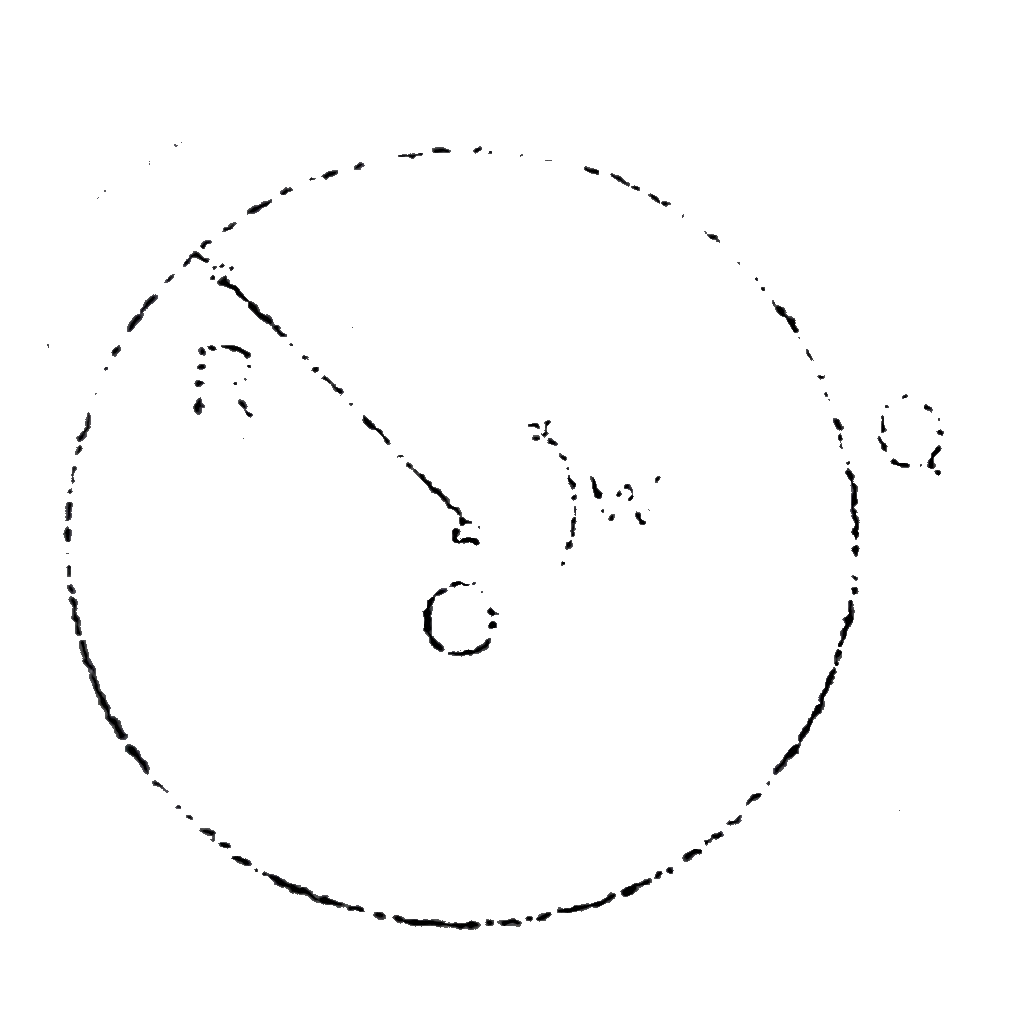A uniformly charged disc of radius r and having charge q rotates with constant angular velocity ω. The magnetic dipole moment of this disc is 1nqωr2. Find the value of n.
The correct Answer is:4
To find the value of n in the expression for the magnetic dipole moment of a uniformly charged rotating disc, we can follow these steps:
Step 1: Understand the problem
We have a uniformly charged disc of radius r with total charge q rotating with a constant angular velocity ω. We need to find the magnetic dipole moment μ and relate it to the given expression 1nqωr2.
Step 2: Recall the formula for magnetic dipole moment
The magnetic dipole moment μ for a rotating charge distribution can be expressed in terms of angular momentum L and total charge q:
μ=L⋅q2m
where m is the mass of the object.
Step 3: Calculate the angular momentum L
The angular momentum L of the disc can be calculated using the moment of inertia I and the angular velocity ω:
L=Iω
For a disc, the moment of inertia I is given by:
I=12mr2
Thus, substituting this into the expression for angular momentum:
L=(12mr2)ω
Step 4: Substitute L into the magnetic dipole moment formula
Now substituting L into the formula for μ:
μ=(12mr2ω)q2m
Simplifying this gives:
μ=qr2ω4
Step 5: Compare with the given expression
We are given that:
μ=1nqωr2
Now we can set the two expressions for μ equal to each other:
qr2ω4=1nqωr2
Step 6: Solve for n
Since q, ω, and r2 are common on both sides, we can cancel them out (assuming they are not zero):
14=1n
Taking the reciprocal gives:
n=4
Final Answer
Thus, the value of n is 4.
---
We have a uniformly charged disc of radius r with total charge q rotating with a constant angular velocity ω. We need to find the magnetic dipole moment μ and relate it to the given expression 1nqωr2.
The magnetic dipole moment μ for a rotating charge distribution can be expressed in terms of angular momentum L and total charge q:
μ=L⋅q2m
where m is the mass of the object.
The angular momentum L of the disc can be calculated using the moment of inertia I and the angular velocity ω:
L=Iω
For a disc, the moment of inertia I is given by:
I=12mr2
Thus, substituting this into the expression for angular momentum:
L=(12mr2)ω
Now substituting L into the formula for μ:
μ=(12mr2ω)q2m
Simplifying this gives:
μ=qr2ω4
We are given that:
μ=1nqωr2
Now we can set the two expressions for μ equal to each other:
qr2ω4=1nqωr2
Since q, ω, and r2 are common on both sides, we can cancel them out (assuming they are not zero):
14=1n
Taking the reciprocal gives:
n=4
Thus, the value of n is 4.
Topper's Solved these Questions
- MAGNETIC EFFECT OF CURRENT AND MAGNETISMBOOK - DC PANDEY ENGLISHCHAPTER - MAGNETIC EFFECT OF CURRENT AND MAGNETISMEXERCISE - Matrix Matching type Questions
12 Videos
- LAWS OF THERMODYNAMICSBOOK - DC PANDEY ENGLISHCHAPTER - LAWS OF THERMODYNAMICSEXERCISE - Level 2 Subjective
18 Videos
- MEASUREMENT AND ERRORSBOOK - DC PANDEY ENGLISHCHAPTER - MEASUREMENT AND ERRORSEXERCISE - Subjective
19 Videos
Similar Questions
A conducting ring of radius r having charge q is rotating with angular velocity ω about its axes. Find the magnetic field at the centre of the ring.

View SolutionA conducting ring of radius r having charge q is rotating with angular velocity ω about its axes. Find the magnetic field at the centre of the ring.

View SolutionA uniformly charged solid sphere a mass M, radius R having charge Q is rotated about its diameter with frequency f0. The magnetic moment of the sphere is
View SolutionA nonconducing disc of radius R is rotaing about axis passing through its cente and perpendicual its plance with an agular velocity ω . The magnt moment of this disc is .
View SolutionA thin uniform ring of radius R carrying charge q and mass m rotates about its axis with angular velocity ω. Find the ratio of its magnetic moment and angular momentum.
View SolutionA thin disc of radius R has charge Q distributed uniformly on its surface. The disc is rotated about one of its diametric axis with angular velocity ω. The magnetic moment of the arrangement is
View SolutionA non-conducting disc having unifrom positive charge Q, is rotating about its axis with unifrom angular velocity ω.The magnetic field at the centre of the disc is.

View SolutionA disc of radius R rotates with constant angular velocity ω about its own axis. Surface charge density of this disc varies as σ=αr2, where r is the distance from the centre of disc. Determine the magnetic field intensity at the centre of disc.
View SolutionA ring of mass m and radius R is given a charge q. It is then rotated about its axis with angular velocity ω.Find
(iii)Magnetic moment of ring.
View SolutionA disc of mass m has a charge Q distributed on its surface. It is rotating about an XX' with a angular velocity ω. The force acting on the disc is

View Solution
